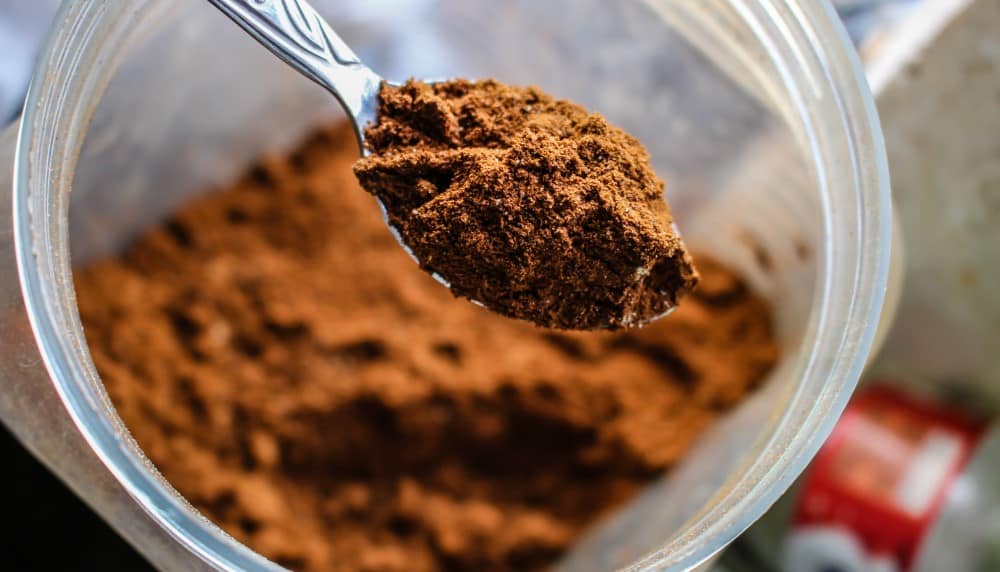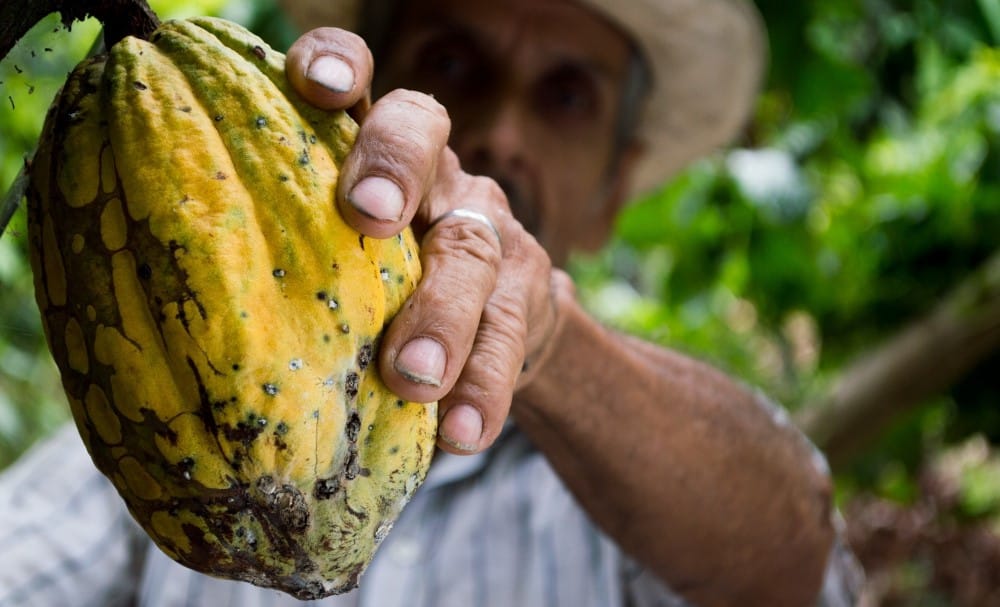Today it’s about a vital topic of life: chocolate.
I’m a huge fan of chocolate myself. Besides, I am a nutritionist. So it is interesting to know to what extent chocolate contributes to the health of the population. The following is about cocoa and our cardiovascular system – especially about the vessels that sprout and are lined by the endothelium.
Today’s question is: “Is Cacao Healthy?”
If you also like to eat chocolate and you do not want to feel guilty about it, you should read, implement and tell every chocolate lover how chocolate can be healthy.

Background Information
To begin with, a brief introduction to endothelial function to understand where the delicious potential wonder drug chocolate can work. An intact endothelial function is essential for long life. In an intact vascular system, nitric oxide (NO) is formed by the “key enzyme” eNOS, which sits on the vessel wall, mainly due to shear stress in the blood, which arises, for example, during physical activity from the amino acid L-arginine. The formed NO can now migrate through the vessel wall and relax the smooth muscle cells. As a result, the diameter of the vessels becomes larger, there can be more blood in this area (better nutrient supply) and the blood pressure can be regulated.
However, since our body has many feedback mechanisms, there is also an enzyme called arginase, which can degrade the substrate for eNOS.
In our endothelium, as everywhere in our body, negative changes occur in aging. These include changes in NO availability or synthesis. This characterizes the damage of the endothelium, which promotes the development of the widespread disease atherosclerosis (including a narrowed vessel diameter) and hypertension. Both are unacceptable conditions, as they can lead to negative cardiac events such as heart attacks.
To measure the function of the endothelium to respond appropriately to different needs, the flow-mediated dilation (FMD) method is used. It can also be used for long-term statements about real cardiac events (9). Primarily, the effects of cocoa on the FMD and the blood pressure will be reflected (2). It should be noted that the blood pressure in 2 categories (systolic and diastolic), which later in the following section “cocoa and endothelium” will emerge.
In various mechanistic studies, secondary plant components from cocoa and cocoa were tested in vitro (in a Petri dish), in rats and in humans. An increase in eNOS activity increased bioactive NO, and NO-dependent vasodilation was observed. Furthermore, a reduction in platelet aggregation was observed. Platelet aggregation contributes unregulated as a risk factor of the disease atherosclerosis.
There are also many other effects of cocoa that are less well documented: protection against dementia, improvement of blood lipid levels, improvement of insulin resistance.
Nutrition science has found many interesting ingredients in cocoa. Including the well-known caffeine, which in pure cocoa with a quantity of 230mg / 100g is absolutely not to be neglected. Primarily, however, the health benefits are attributed to the group of phytochemicals, which are increasingly coming under the spotlight of research and the public.
Of particular interest here are the flavanols and the subclass of epicatechins. They may be known to some by the occurrence in green tea, in which their effect is also increasingly examined.
Mostly we do not eat pure cocoa, because it is very bitter. This leads to the question of whether there are enough active ingredients in processed cocoa.
Miller et al. investigated commercially available cocoa products in the US for their epicatechin content. You. looked at the relevant ingredients of “natural” cocoa powder, dark chocolate and milk chocolate.
Three different manufacturers per product category with 18 different samples each were examined. In order to form an average value and to be able to exclude fluctuations, these were mixed together. The examined milk chocolate contained about ¼ of the active ingredients of dark chocolate (here ~ 50-70% cocoa content). Whereas the used cocoa powder contained about five times as much as the dark chocolate. The bitter baking chocolate lay between the dark chocolate and the pure cocoa. An almost 100% correlation was found between the defatted cocoa solids content and the drug content. Thus, an essential component was discovered to assess drug content. It is often pointed out that the processing would significantly change the active substance content, whereas, in this work, the nearly 100% correlation between milk chocolate and pure cocoa could not be confirmed and above all the defatted cocoa solids content was decisive and not the degree of processing.
In conclusion, the paper states that, based on the results, the proportions of active ingredients in the leading chocolate brands are significantly dependent on the defatted cocoa solids content and the processing has little effect.

Is Cacao Healthy?
So much for the theory. But we’re actually interested in what a tangible advantage the enjoyment of cacao can offer you. A few aspects must be considered when looking at the results.
The best results are transferable if the subjects to whom the study was performed are most similar to you. This refers to the age or, for example, the health status. If you have elevated blood pressure, you want to see the effect of cocoa on people who also have elevated blood pressure, etc.
In addition, not all results are always transferable to both sexes. However, in the investigations mentioned here there was always about the same proportion of both sexes, so we can neglect this here.
In order to keep the whole thing practicable, I have only looked at studies with chronic intake (> 2 weeks) of cocoa or dark chocolate. It is negligible to eat 200g of chocolate once a month. Rather, it is like many health-promoting foods: the duration brings the advantage.
Most interesting here is the so-called meta-analyses because they aggregate many data statistically, are subject to clear criteria and thus reduce the risk of biasing data by poorly conducted studies.
One such meta-analysis by Hooper et al. (2008) investigated the effect of dark chocolate or cocoa on FMD and blood pressure on individuals who were more likely to be in the healthy category with only minor health problems.
In terms of FMD, no effects were seen here, whereas there were very strong changes in blood pressure: -5.88mmHg systolic blood pressure (SBP) and -3.3mmHg diastolic blood pressure (DBP). These are very strong results, but the authors themselves note that the quality of the studies has varied widely.
Desch et al. summarized doses of 5-174mg epicatechin. The population here was very mixed in age, but was also more of a healthy category. But also here -3,9mmHg SBP and -2,5mmHg could be observed. However, 174mg of epicatechin is very much to be considered as it is up to 50g of dark chocolate daily, depending on the chocolate used.
Buitrago-Lopez et al. simply examined “Never vs.. High (> 1 serving / day) “general chocolate consumption. Here were rather sick people in the field of investigation, but was traced here for up to 8-16 years. Whereas the first two studies presented relate to surface parameters such as FMD and blood pressure, real cardiac events can be recorded at such a long follow-up time. Again, it was found that there was a 37% reduction in the relative risk of cardiometabolic disease.
A review, which also dealt with cocoa and the cardiometabolic function, wrote in his summary:
“CF (Cocoa Flavanols) have significant potential to improve vascular endothelial function, and that, in particular, blood pressure.” – Davison & Howe , 2015
The prospects are good. Despite this, most studies are dealing with very high doses that are difficult to achieve without losing their calorie balance – but not the following study.
Taubert et al. examined 44 rather healthy people in 2 groups. Group 1 received 6.3g of cacao chocolate every day and the other group received white chocolate as a control group. The examination lasted 18 weeks. Despite the small amount, -2,9mmHg SBP and -1,9mmHg DBP could be recorded here and this study is considered to be of high quality.
In all studies, it should be noted that no proper placebo group could be established, as dark chocolate and chocolate without cacao always taste different. To put the whole thing in a long-term health context, it is known that a reduction of -3mmHG SBP leads to a reduction of the relative risk of stroke by 8% and a reduction of the total mortality by 4%.
In addition, a threshold for the clinical relevance of -1.5mmHg SBP and -1mmHg DBP has been established in trials of antihypertensive drugs. This suggests that the effects achieved by cocoa or the like are not negligible.
Conclusion: Is Cacao Healthy?
So we see that the establishment of dark chocolate instead of milk chocolate or the daily use of pure cocoa powder, for example in oatmeal, can offer a clear health benefit. Despite all this, one should not lose sight of the considerable calorie content of chocolate (~ 520kcal / 100g).
I’ve been switching to dark chocolate (72% cocoa) for several months now. After a couple of times you got used to the taste and I really enjoy eating it now.
In conclusion, the European Food Safety Authority (EFSA) approves a health claim (scientifically validated by EFSA for food and a health impact that may be printed on food products). Here it says:
“Cocoa flavanols help maintain endothelium-dependent vasodilation, which contributes to normal blood flow”. In order to obtain the claimed effect, 200 mg of cocoa flavanols should be consumed daily. This amount could not be more than 2.5 g of high-flavanol cocoa powder or 10 g of high-flavanol dark chocolate, both of which may be consumed in the context of a balanced diet. The target population is the general population. “– EFSA, 2012
Such health claims are generally difficult to achieve and EFSA rejects many health claims based on their public health mandate. This means that even small changes are not enough to receive a health claim.
Therefore, you can enjoy your piece of dark chocolate every now and then and it might even benefit you.




